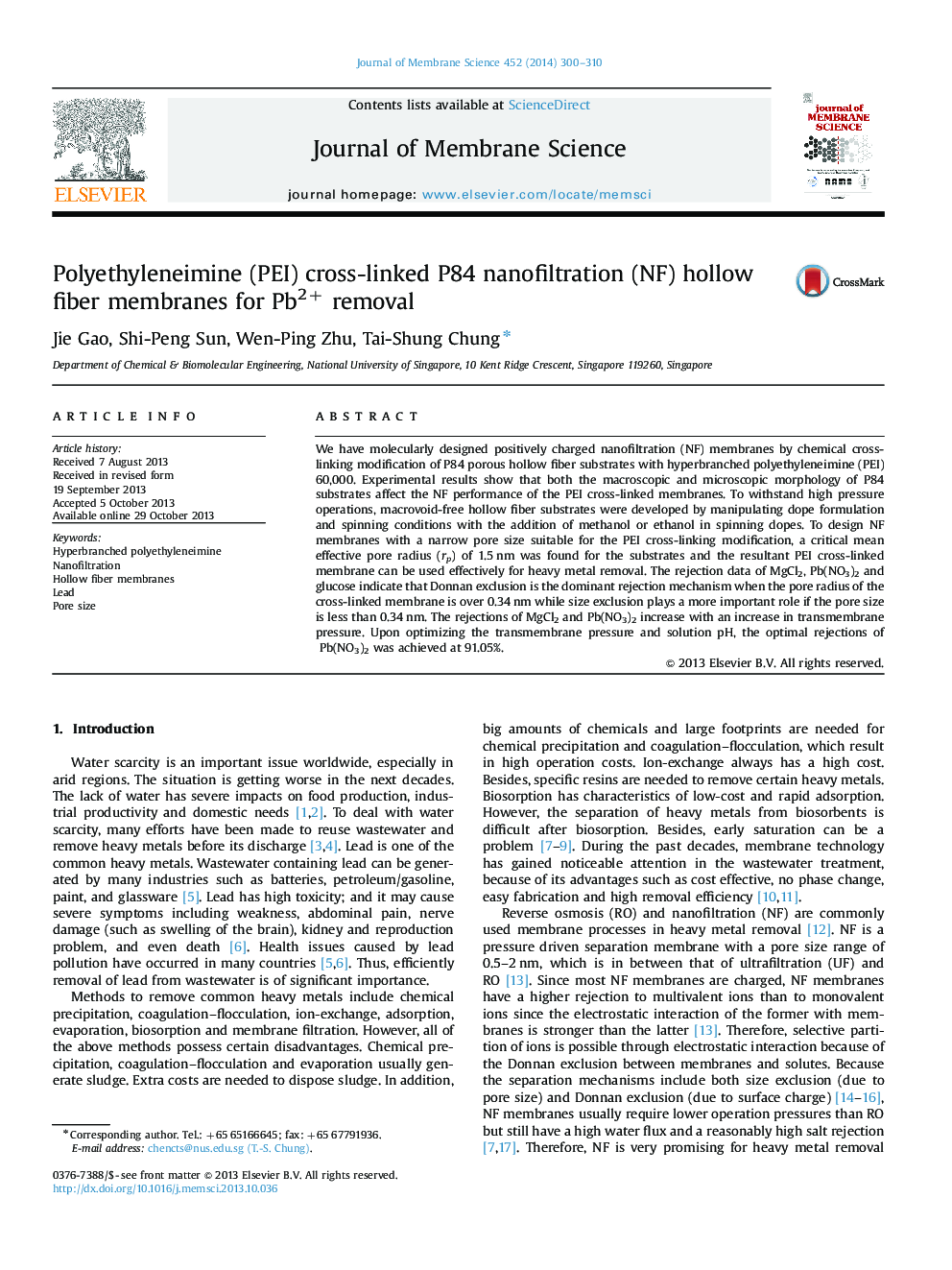| Article ID | Journal | Published Year | Pages | File Type |
|---|---|---|---|---|
| 633718 | Journal of Membrane Science | 2014 | 11 Pages |
•The mean effective pore radius (rp) of a substrate is crucial for PEI cross-linking.•Donnan exclusion effect dominates when rp is greater than 0.34 nm.•Size exclusion effect dominates when rp is smaller than 0.34 nm.•The highest rejection to MgCl2 and Pb(NO3)2 are 99.06% and 91.05%, respectively.
We have molecularly designed positively charged nanofiltration (NF) membranes by chemical cross-linking modification of P84 porous hollow fiber substrates with hyperbranched polyethyleneimine (PEI) 60,000. Experimental results show that both the macroscopic and microscopic morphology of P84 substrates affect the NF performance of the PEI cross-linked membranes. To withstand high pressure operations, macrovoid-free hollow fiber substrates were developed by manipulating dope formulation and spinning conditions with the addition of methanol or ethanol in spinning dopes. To design NF membranes with a narrow pore size suitable for the PEI cross-linking modification, a critical mean effective pore radius (rp) of 1.5 nm was found for the substrates and the resultant PEI cross-linked membrane can be used effectively for heavy metal removal. The rejection data of MgCl2, Pb(NO3)2 and glucose indicate that Donnan exclusion is the dominant rejection mechanism when the pore radius of the cross-linked membrane is over 0.34 nm while size exclusion plays a more important role if the pore size is less than 0.34 nm. The rejections of MgCl2 and Pb(NO3)2 increase with an increase in transmembrane pressure. Upon optimizing the transmembrane pressure and solution pH, the optimal rejections of Pb(NO3)2 was achieved at 91.05%.
Graphical abstractFigure optionsDownload full-size imageDownload high-quality image (129 K)Download as PowerPoint slide
